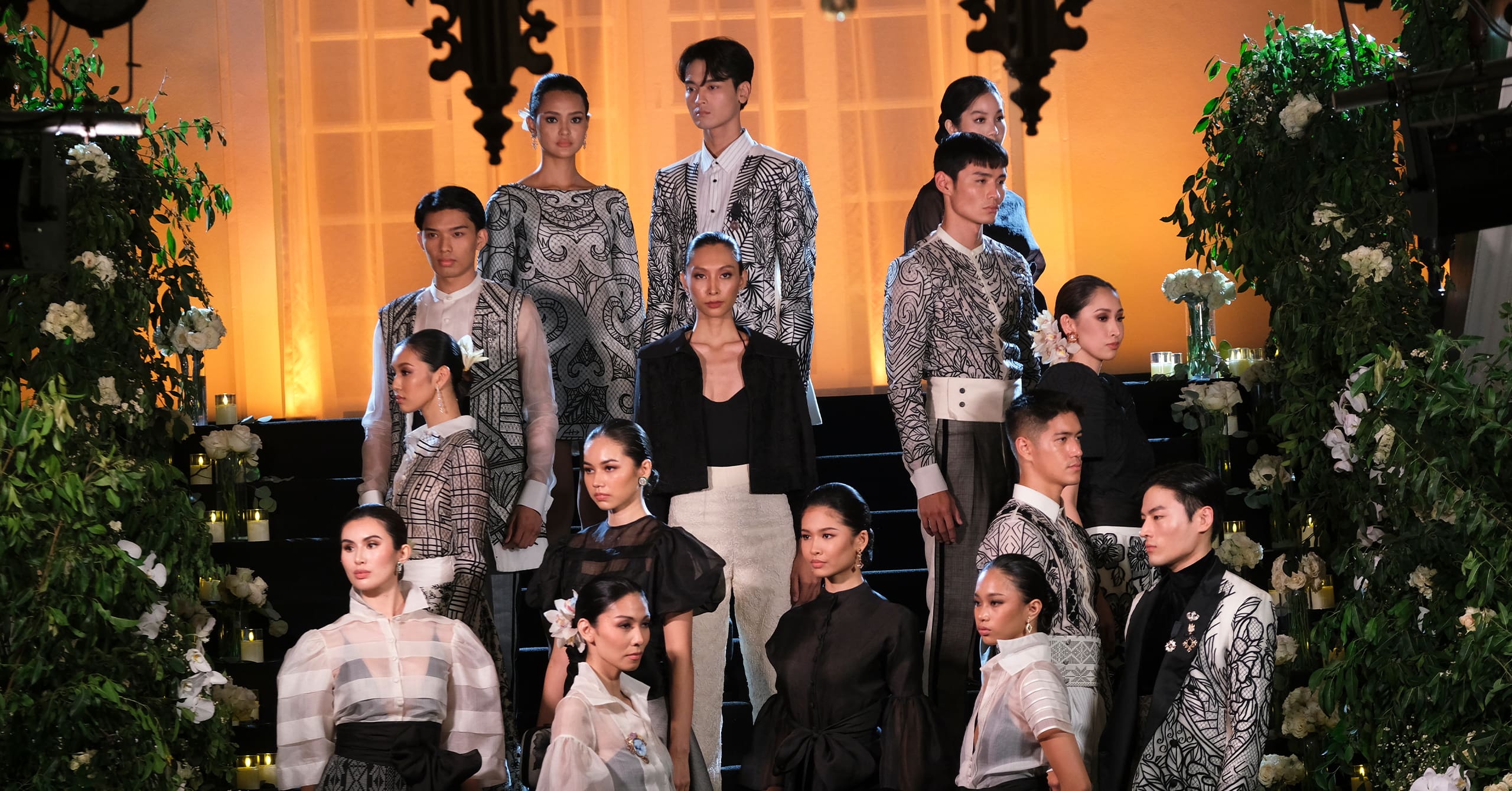Photographed by Ed Simon
Photographed by Ed Simon
With fashion as his medium, the acclaimed designer tells the story of weavers from all over the Philippines.
At heart, fashion designer Avel Bacudio is a storyteller. His creations begin and end with story, with every last detail imbued with intention. The collection he presented at the Goldenberg Mansion in Malacañan was no exception.
“The show is all about the local weavers, the bordadera (embroiderers),” Bacudio tells Vogue Philippines. “I traveled to different places in the Philippines until I found the hardship and story of our weavers.”
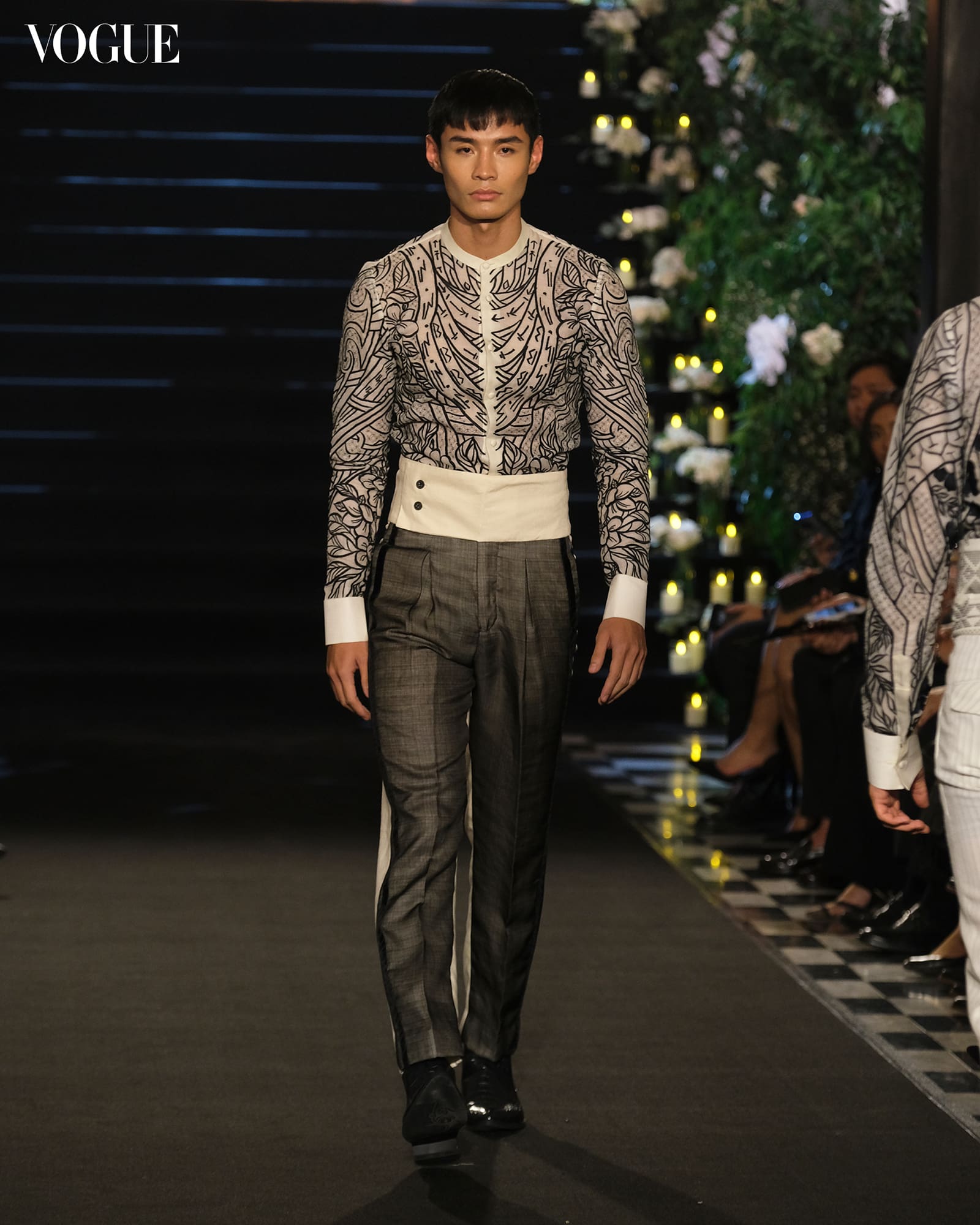
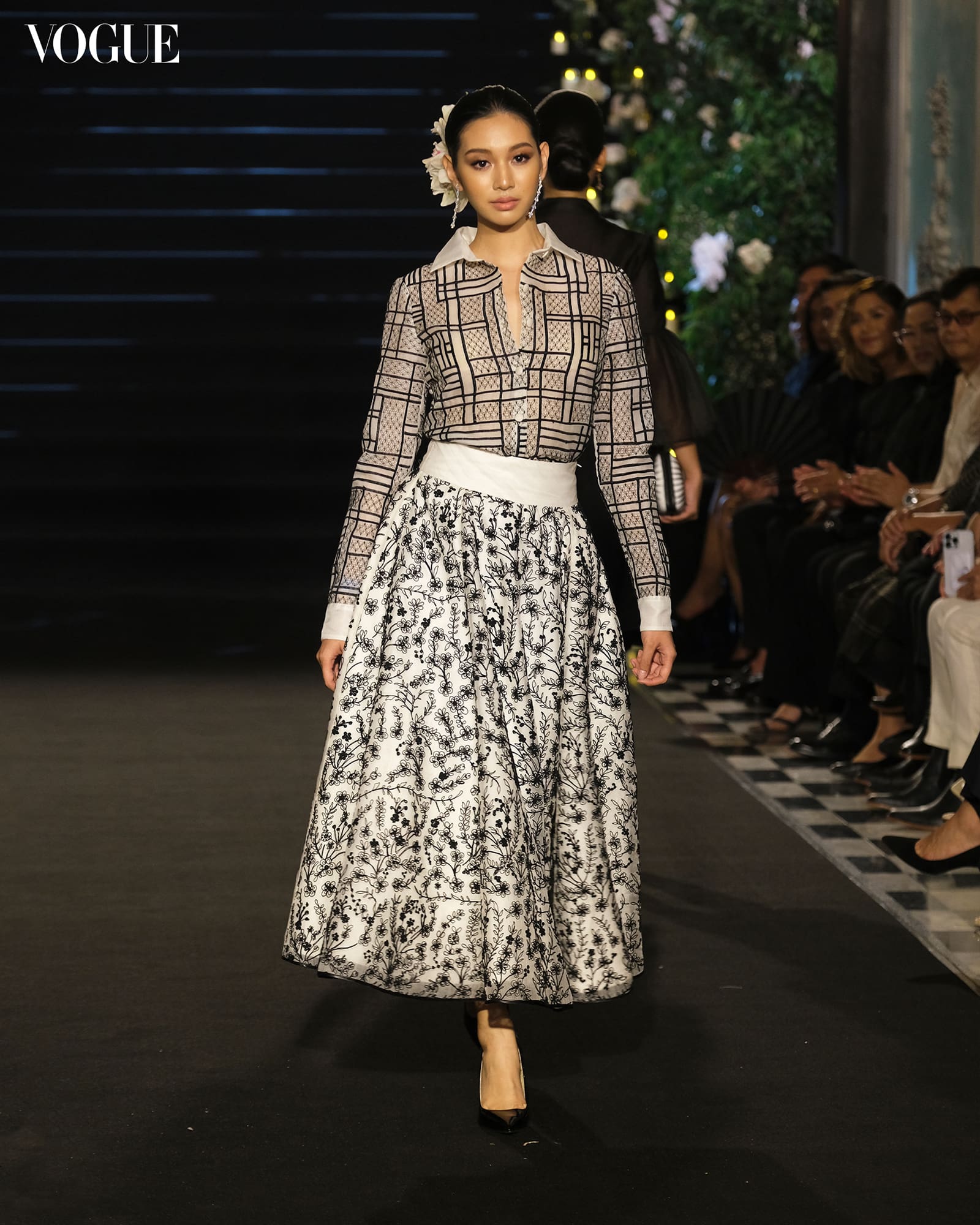
He continues, “I told myself, I’ll have a fashion show that represents them, that represents our ancestors—the traditions that they started.”
The collection opens with his models lining the historic mansion’s main staircase, gazing onward in stoic poise. One by one, they descend in slow, graceful strides. ‘60s-silhouetted dresses and separates are reminiscent of his signatures: easy, comfortable, classic. All of the garments are black and white—an intentional choice made for the sake of wearability, as well as Bacudio’s desire to spotlight the intricacies one garment can hold. In a fitting tribute to local weavers, each piece is rich with detail: delicate brocades, sweet bows, and meticulous embroidery.
“The [colors] tell a story: how each piece was made, what it is made from, and the process,” the designer explains about the predominantly black and white palette.
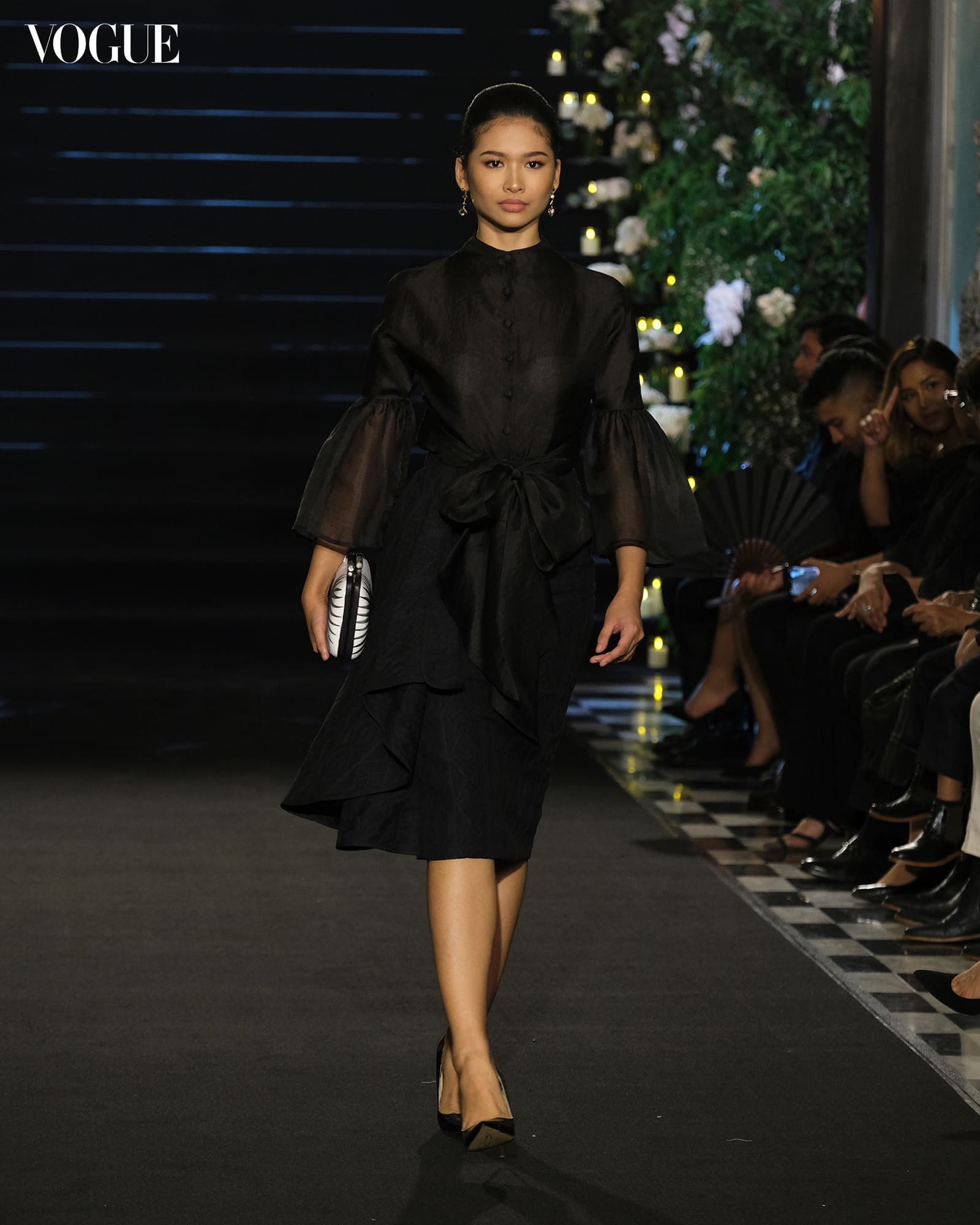
The fabric used in the collection are custom-made, born out of a collaboration between Bacudio and the Department of Science and Technology (DOST). After taking short courses at the Fashion Institute of Technology in New York and being introduced to a multitude of textiles, he grew inspired.
“I wanted to create fabric na pwede natin ipagmalaki (that we can be proud of),” he muses. “I met with DOST, and we came up with my dream [fabric from] the waterlily. [We also have fabric from] the banana, the pineapple.”
If Bacudio’s technique hails from local weavers, and his fabric comes from an abundance of the country’s raw materials, the patterns he used also have their origins in Filipino tribes across the country, including Zamboanga.

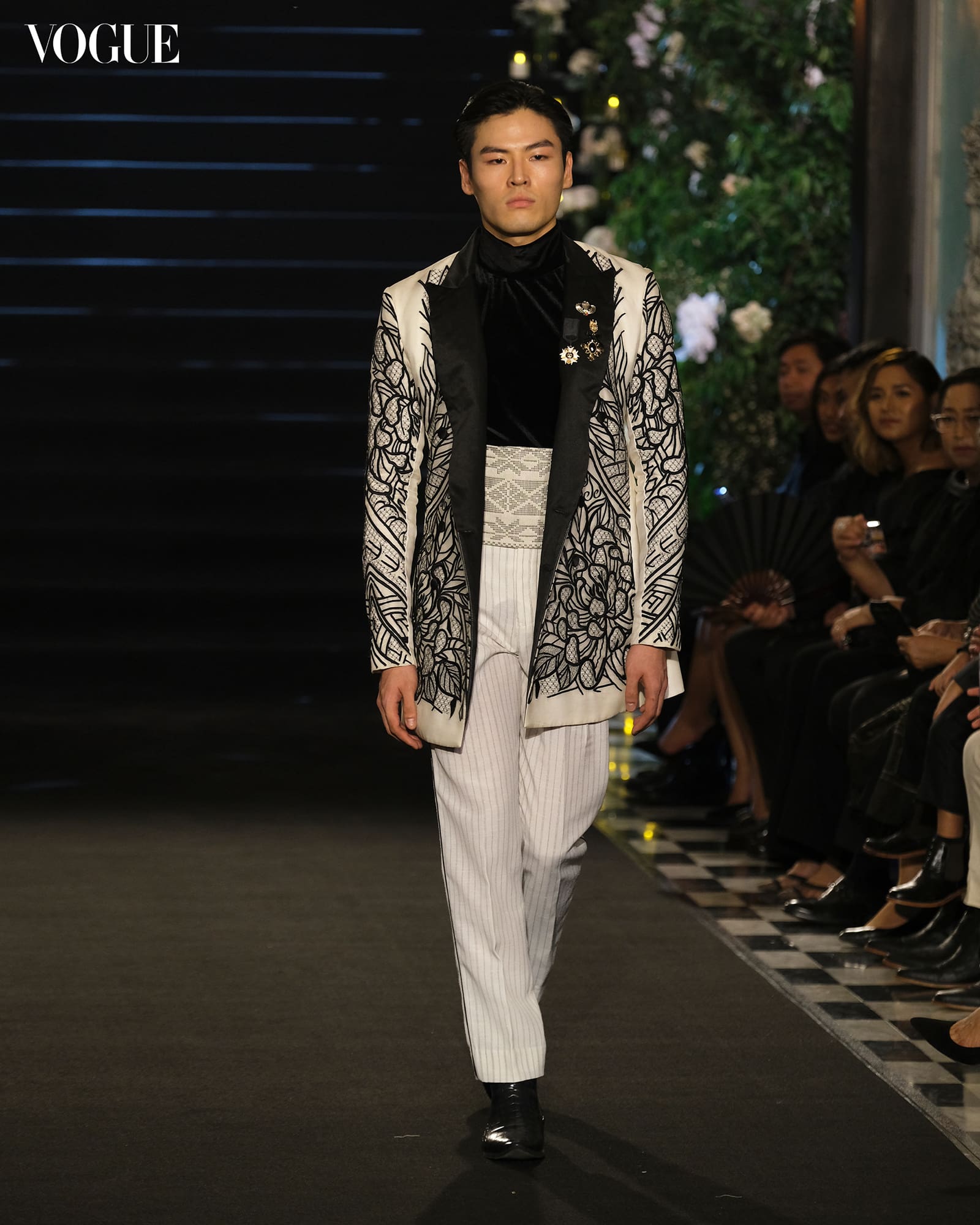
“I didn’t change the patterns of the different provinces I sourced them from because each pattern tells a story. I didn’t want to touch those stories,” he expands. “All I did was change the colors I used.”
A Journey of Discovery
For Bacudio, it was through isolation during the pandemic that allowed realization to strike: he needed purpose. In pursuit of new ways of making, a series of excursions to different regions across the country allowed him to find weavers with generations behind their craft but with no one to pass it down to. When asked why the story of these weavers was so close to his heart, he had a straightforward response: “This is what I see is disappearing.”

In a message to the youth, the designer says that leaving behind a legacy of being famous comes second to uplifting one’s own culture, to reviving a nearly forgotten craft.
He says, “Kailangan natin buhayin at ipagmalaki sa buong mundo na mayroon tayong kultura at sining na pinamana ng ating mga ninuno na kailanman hindi mabubura sa mundo (We need to revive it and show the world the arts and traditions that have been passed down to us from our ancestors, so that it might never be erased from this world).”
This interview has been edited and condensed.
- Avel Bacudio’s Latest Collection Is A Sentimental Journey To The Philippines
- Fashioning A Nation’s Pride: Ambassadors Dressed In Filipiniana Honor Philippine Independence
- “Puey Quiñones FILIPINO” Is A Love Letter To A Life Of Work
- The Class Of Spring/Summer 2023: Filipino Designers Take Over LA Fashion Week
